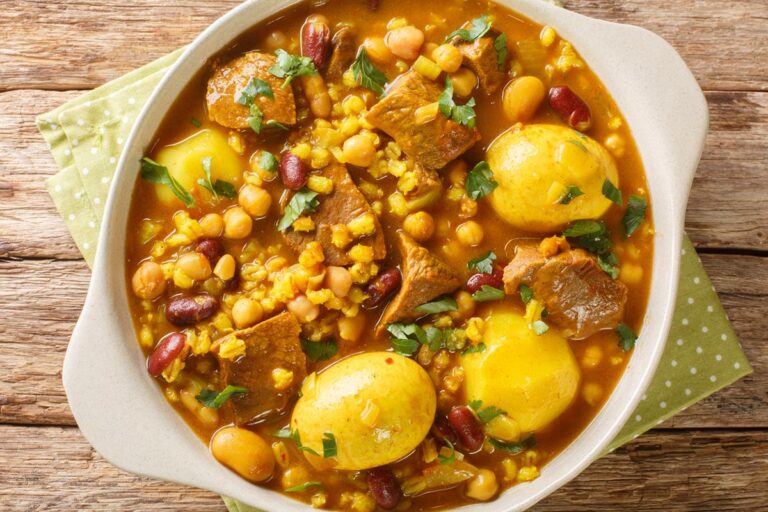
When you think of Shabbat foods, what comes to mind? Depending on your personal and family traditions, you might think of cholent, gefilte fish, or challah. Or perhaps you associate Shabbat with hamin, kibbeh, nayim, or even sushi.
The extraordinary diversity of the Jewish community is reflected in our cuisines, as varied as our ethnic backgrounds. Across the globe, Jews have celebrated Shabbat with unique dishes, utilizing and adapting local ingredients.
From the comforting stews of Morocco and the Middle East to the delightful sweets of Yemen and the warming broths of Spain, here’s a guide to the diverse culinary traditions that help Jewish communities all over the world celebrate Shabbat.
Multiple countries:
Dafina, Hamin, Cholent and Skinha
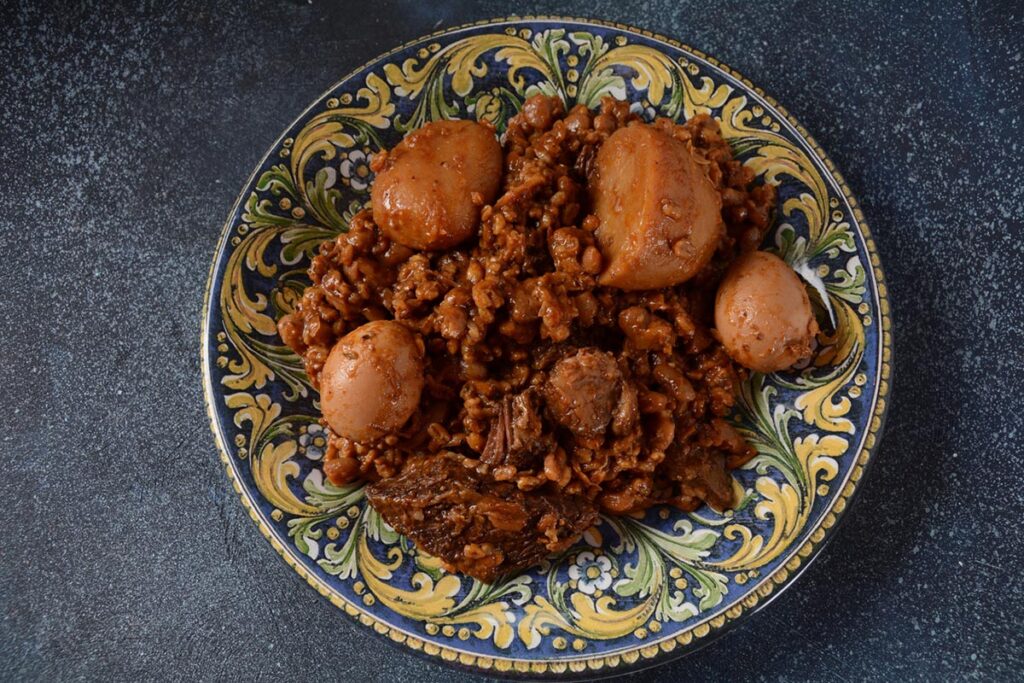
These dishes are variations of a traditional Shabbat stew, slow-cooked on a stove or hot plate for many hours. In earlier times, these stews were typically prepared in a communal bakery, ready to be picked up by families on their way home from Shabbat morning prayers.
Dafina, hamin, cholent and skinha are Moroccan, Middle Eastern, Eastern European and Indian takes on this recipe, respectively. Each locale adds its unique spin with specific ingredients (like beef, potatoes, eggs, beans, chickpeas, or barley) and seasoning blends, giving a distinct regional flavor to the dish.
Kasha varnishkes
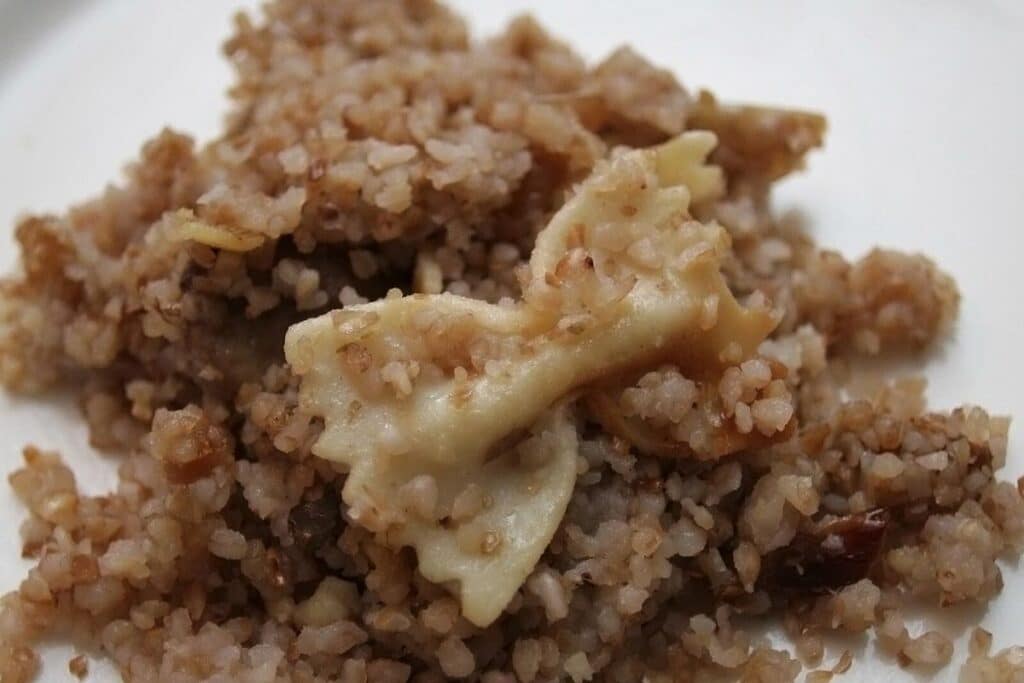
A traditional Ashkenazi Jewish dish of Eastern European origin, this dish features kasha (buckwheat groats), bow-tie pasta (varnishkes), and often includes caramelized onions and mushrooms. The mixture is sautéed together, producing a hearty, savory side dish. Although it may seem simple, kasha varnishkes delivers a unique combination of flavors and textures that makes it a beloved addition to the Shabbat table.
Kugel
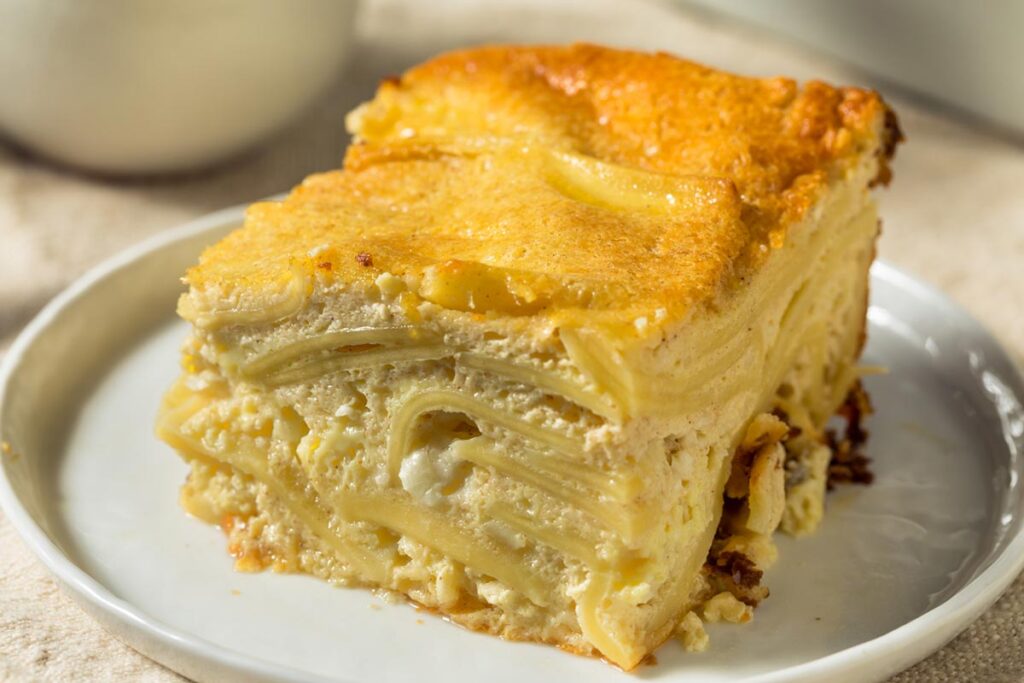
Kugel, a cherished dish among Jewish communities, is a staple on the Shabbat table. This baked casserole-style dish features ingredients like egg noodles, potatoes, or sweetened shredded vegetables, combined with eggs, butter, and a delightful array of seasonings.
Originating from Eastern European traditions and adapted by Jewish communities globally, it offers a comforting and flavorful accompaniment to the Shabbat meal.
Azerbaijan:
Plov
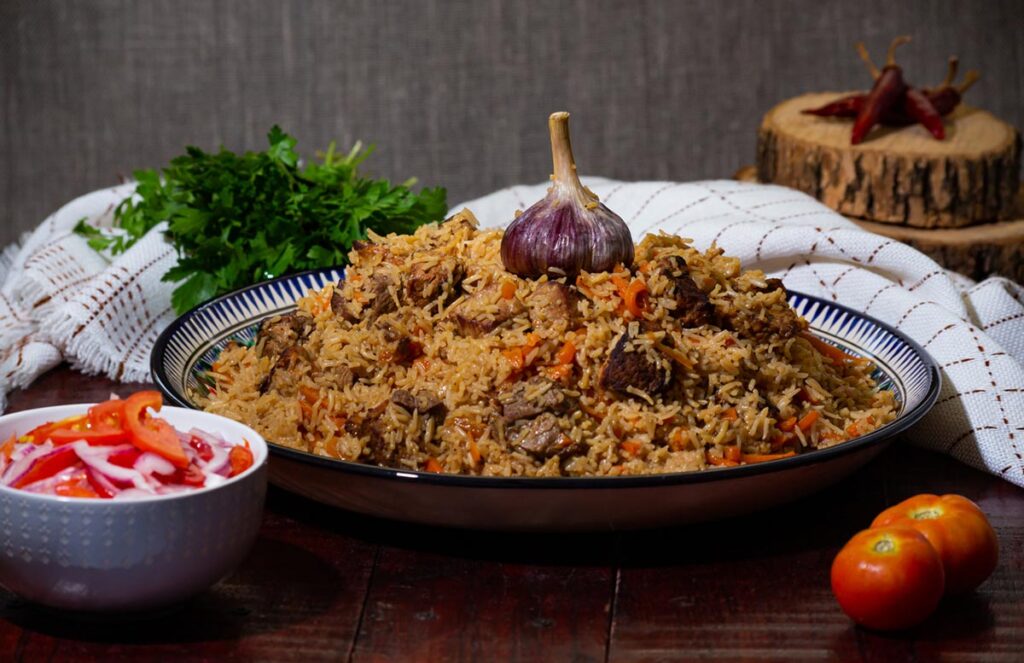
Also known as ‘pilaf,’ plov is a single-pot meat and rice dish that originated in Uzbekistan but has gained popularity in Azerbaijan, especially during Shabbat. Like many rice dishes in the region, the dish is cooked in one pot and inverted upon serving, so that the crispy bottom becomes the top of the dish. A hearty stew called hamin (mentioned earlier in this article) often accompanies the dish.
Egypt:
Ferik
This Egyptian Shabbat stew is similar to cholent, but the main difference is the grain used. While cholent might contain barley, ferik uses freekeh, akin to bulghur wheat. The grain is prepared in an unusual way. A portion of wheat is harvested while still unripe, then set on fire, essentially toasting it. This imparts a unique smoky taste to the stew. The Arabic word “freekeh” is derived from “farak,” meaning “to rub,” which refers to the process of threshing the toasted grains to extract the cooked green kernels.
Beid hamine
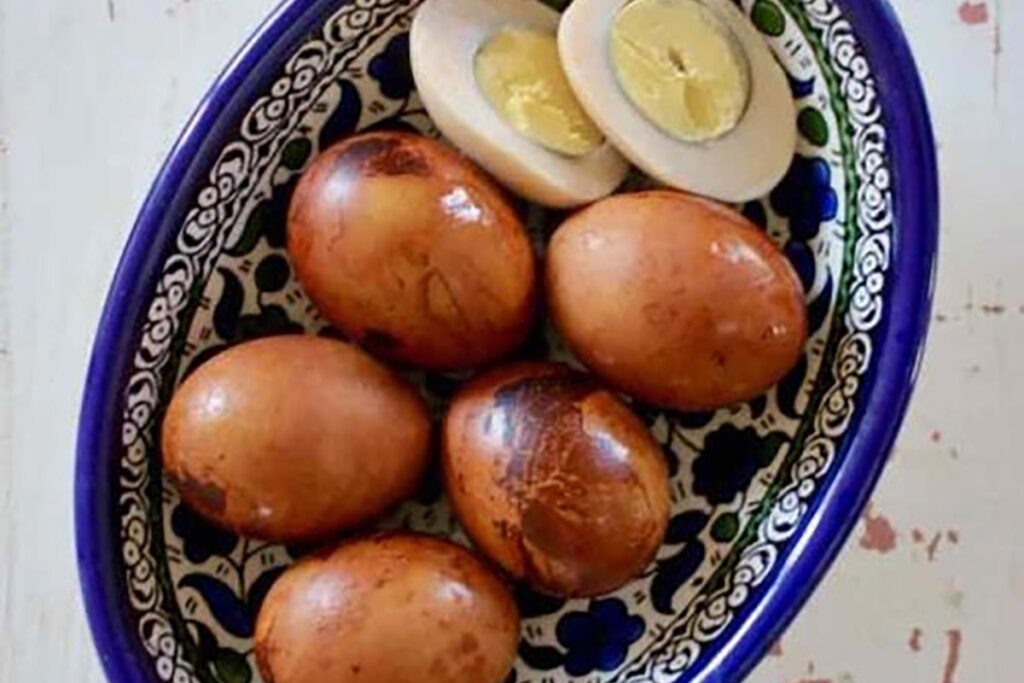
Traditionally prepared alongside ferik, beid hamine features long-cooked hard-boiled eggs, adding a protein-rich dimension to the Shabbat meal. The prolonged simmering imbues the eggs with a robust, deep flavor and a unique brownish hue.
M’hencha
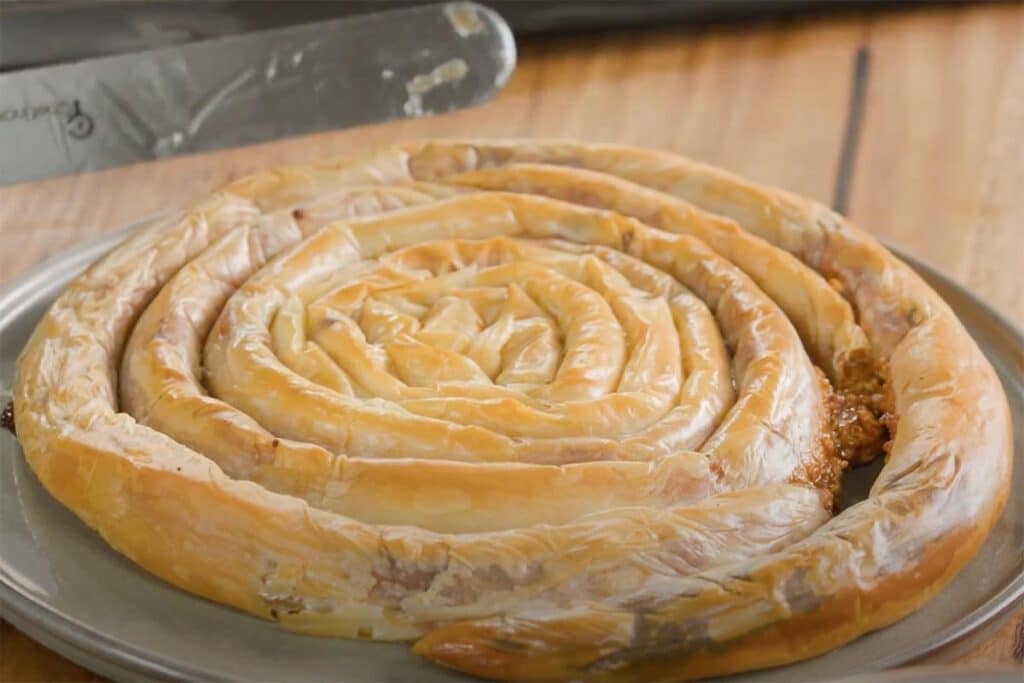
Also known as a filo snake, this dessert pastry has the form of a long rope coiled into a circle. Similar in composition to baklava, it is often filled with almonds, sugar, citrus, cardamom, and sometimes pistachios. This delightful sweet treat is enjoyed for dessert at many Egyptian Shabbat tables.
Ethiopia:
Sanbat wat
This Ethiopian chicken stew is traditionally eaten with one’s fingers, using a fermented spongy bread called “injera” as a scoop. Sanbat wat is a spicy concoction of slow-cooked yellow onions, hard-boiled eggs, garlic, ginger, lemon juice, and berbere, a key spice in Ethiopian cooking.
Dabo
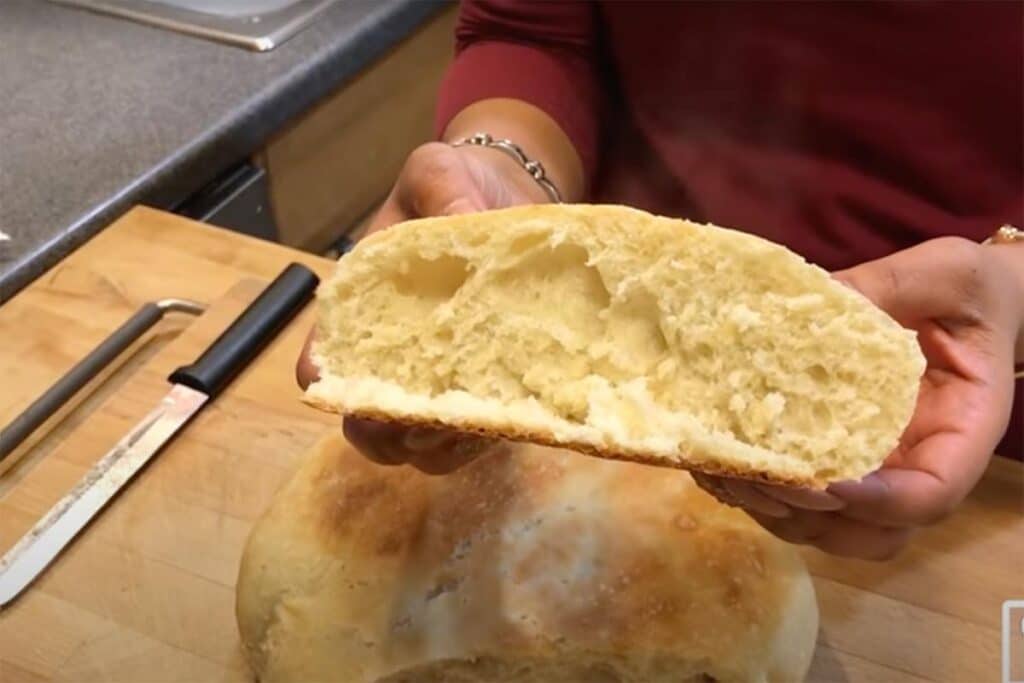
This sweet, crumbly Shabbat bread is primarily considered a breakfast item. Traditionally prepared in a clay pot wrapped in banana leaves over an open fire, Dabo is now commonly baked in modern ovens. It can be crumbled into a salad or enjoyed with a spread for a delightful start to Shabbat morning.
India:
Sharbat
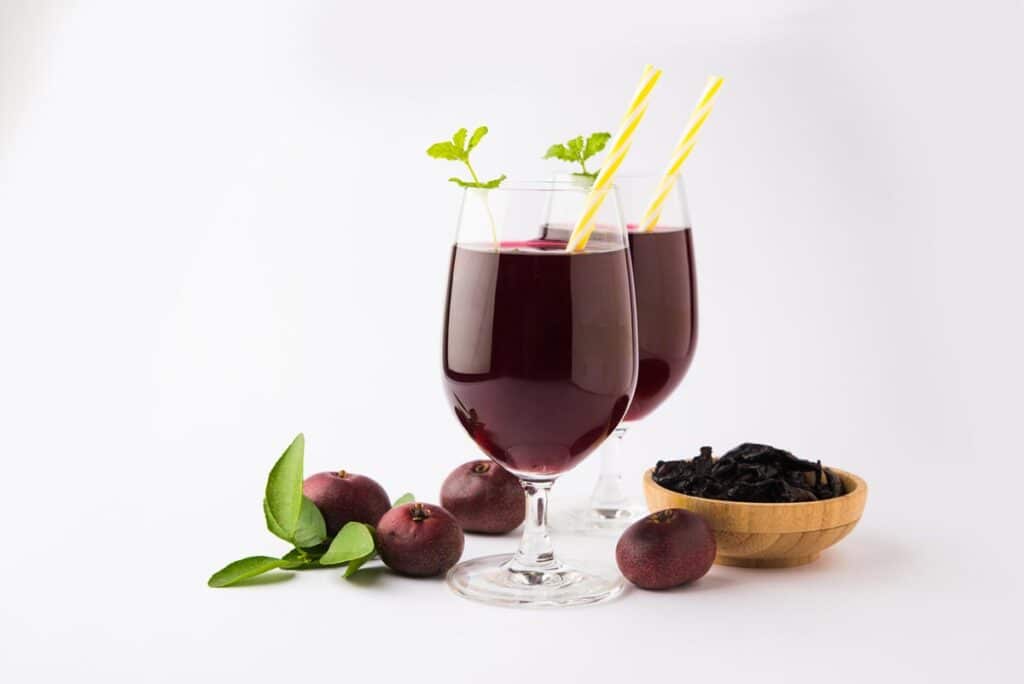
Typically, this classic Indian drink is made from various fruits and flowers, but there is a version specifically designed for Shabbat.
The Shabbat sharbat, made from grapes, was introduced as a substitute for wine during Shabbat services, as it was challenging for Jews in India to produce or purchase kosher wine. So, they embraced sharbat. Served chilled, grape sharbat is characteristically sweet due to the simple syrup used in its preparation.
Iran:
Gondi:
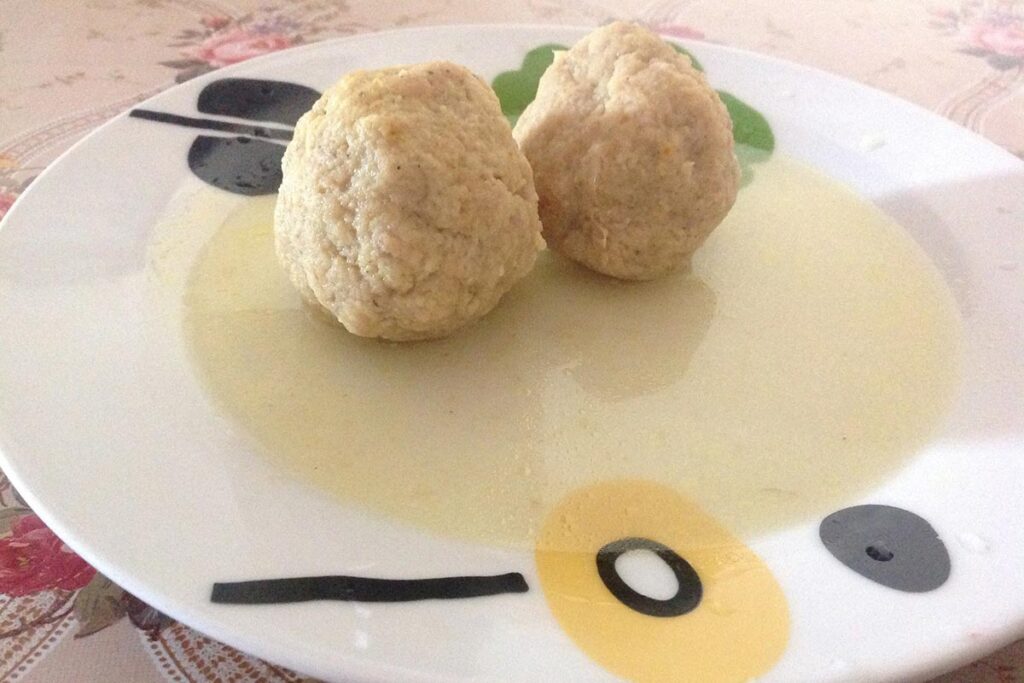
This dish, which can serve as either a starter or a main, features large meatballs made of ground chicken and chickpea flour, swimming in a chicken-based stock, seasoned with potatoes, cumin, turmeric, and other spices. As with Ashkenazi cholent, the soup is left on a hot element overnight in observant Jewish homes. In some Persian Jewish households, lamb or veal might replace the chicken.
Iraq:
Tbeet
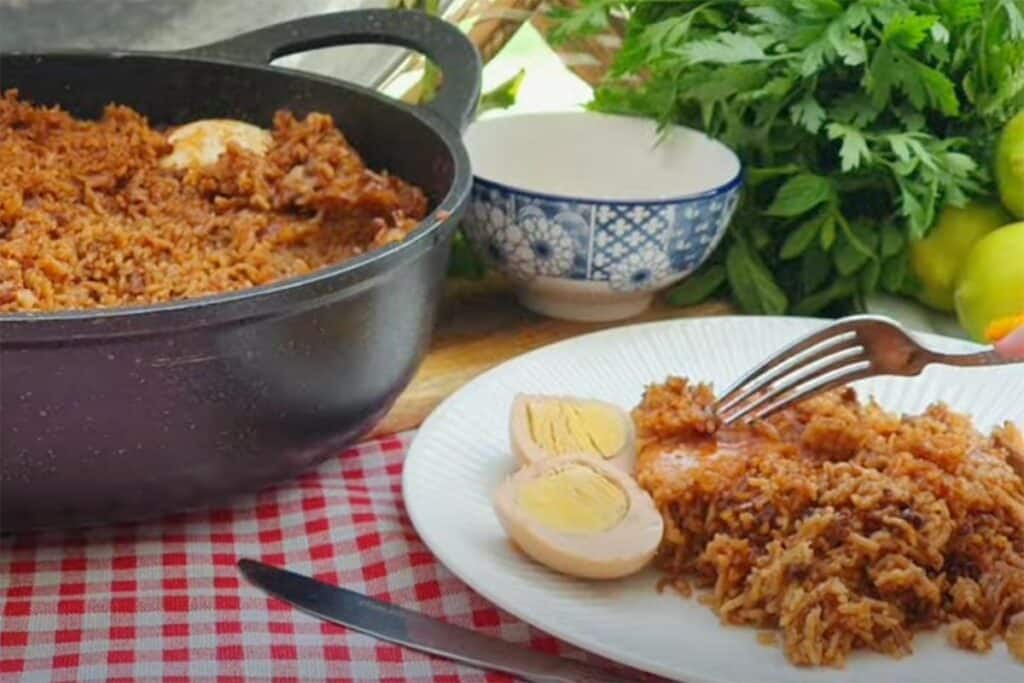
This Iraqi spin on the traditional Shabbat stew, cholent, uses chicken rather than beef. The dish involves a whole chicken stuffed with giblets and jasmine rice, lavishly topped with additional rice.
It is seasoned with aromatic rose petals, cinnamon, cardamom and tomato paste, and complemented with hard-boiled eggs. Mirroring the preparation of other Shabbat stews, Tbeet can be cooked overnight in an oven, slow cooker, or on a hot plate.
Libya:
Aharaimi
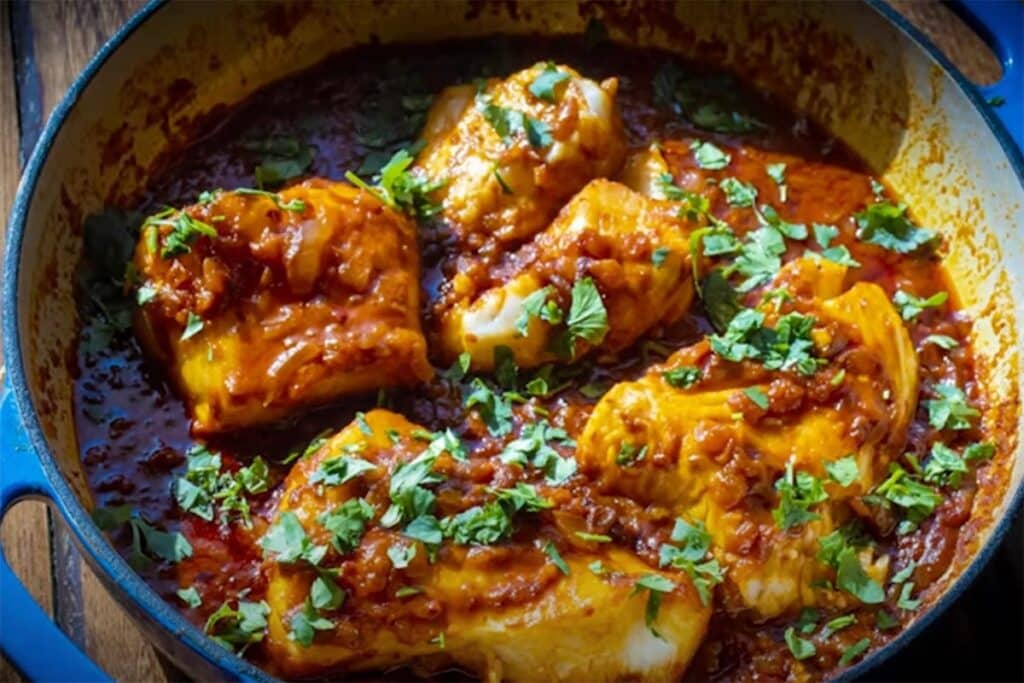
This spicy fish dish, typically featuring white fish, bass, or cod, is a staple at Libyan Shabbat dinner tables. It’s mixed with tomato sauce, bell peppers, onion, garlic, cumin, parsley, and smoked paprika or cayenne, creating a richly flavored main course.
Chershi kara’a
Chershi kara’a adds a vibrant kick to Libyan Shabbat tables. This pumpkin-based condiment, similar to a spicy relish, is often spread on pita or used to enhance the flavor of couscous. Its bold seasoning includes garlic, paprika, cumin, and red pepper, with a hint of sweetness from lemon and honey. To lessen the heat, some enjoy it with a dollop of yogurt. Besides adding flavor, chershi kara’a is also a nutritious supplement to the meal, rich in vitamins and minerals.
Lubia bel saeilk
This lamb stew features beans and spinach, spiced with cilantro, turmeric, and pepper. Slow-cooked over low heat, like other Shabbat stews, it can be savored solo or over a bed of fluffy rice.
Mafrum
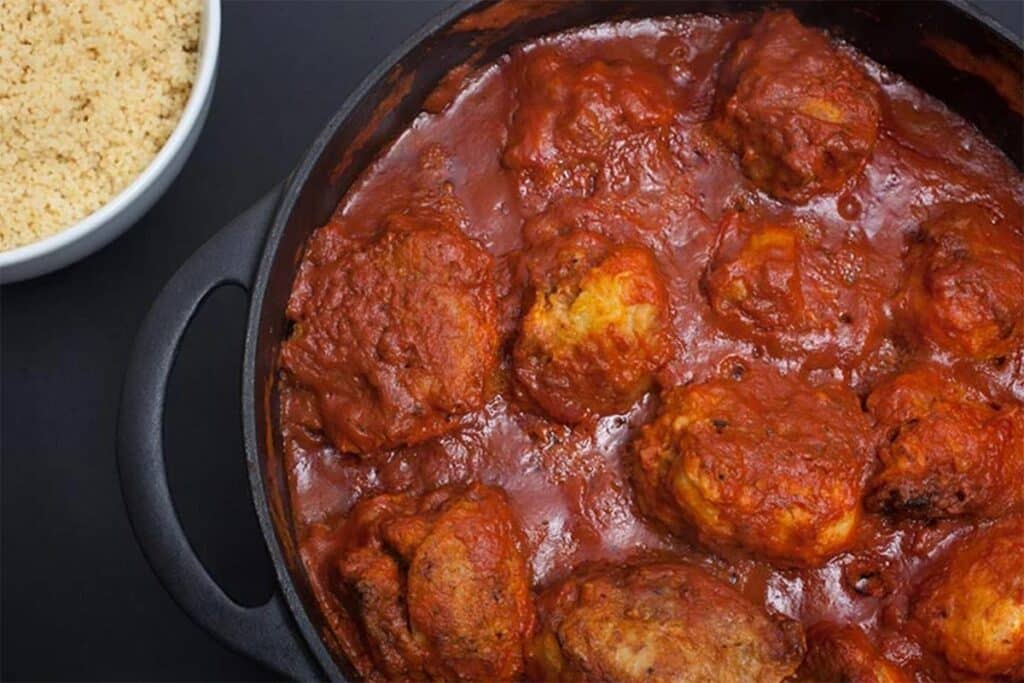
Mafrum, a feature of Libyan Shabbat tables, combines spiced ground beef with vegetables. Typically, the meat is stuffed into vegetables like potatoes and eggplant. The stuffed vegetables are then dipped in flour and egg, fried, and served in a rich tomato sauce. This dish is traditionally served over a bed of couscous, providing a comforting and delicious Shabbat meal.
Mexico:
Flan
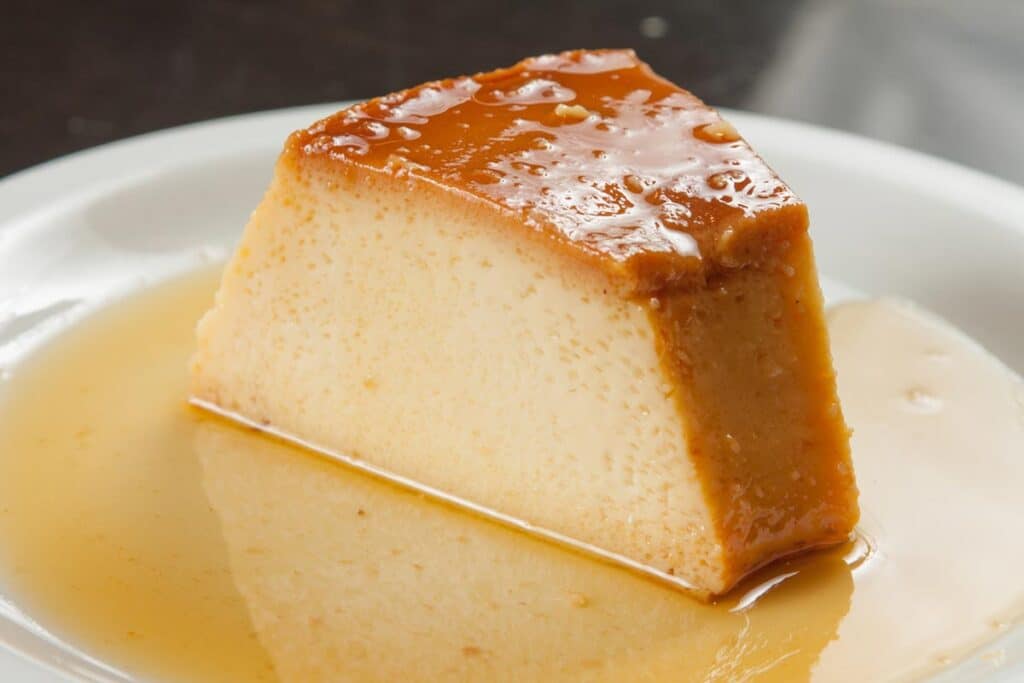
This classic Mexican dessert typically combines eggs, sweetened condensed milk, and flavoring. For Shabbat, a dairy-free version is made, often with coconut cream, so that it can be enjoyed with Shabbat dinners that feature meat. The creamy custard dessert is versatile and can be infused with a medley of flavors, including orange, vanilla, and coffee.
Tortilla soup
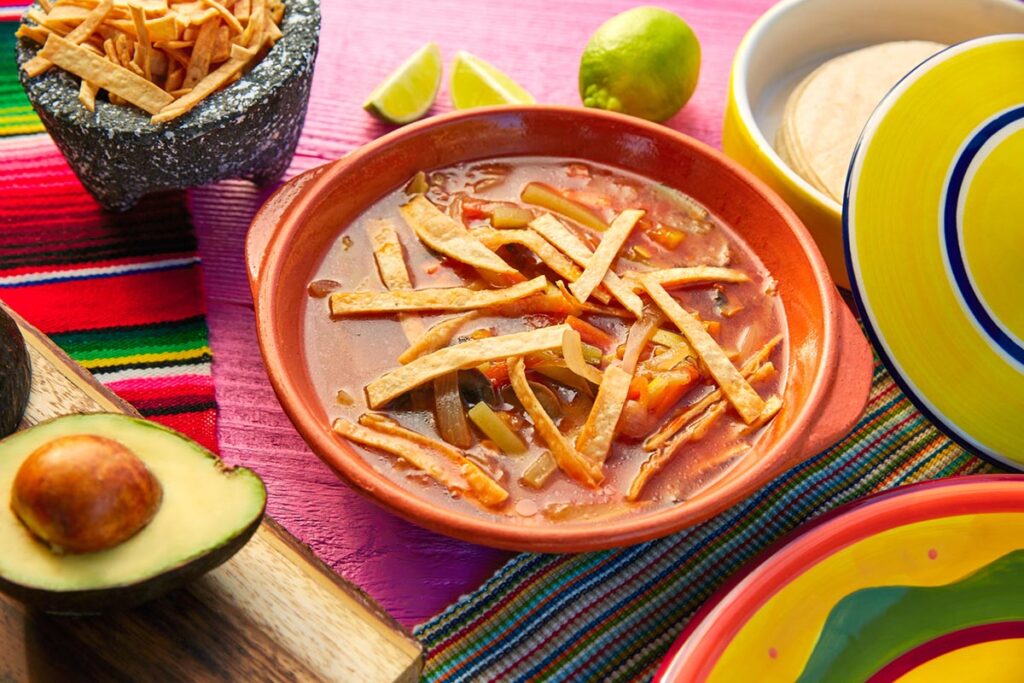
A Mexican take on chicken noodle soup, only spicier, tortilla soup is a mainstay of Mexican cuisine. Adopted into Shabbat fare, it is typically prepared in a slow cooker, just like other Shabbat stews. In this heartwarming dish, the tortilla chips add a crunchy texture while the chili peppers bring a comforting warmth, perfect for the conclusion of a week.
Morocco:
Lentil stew
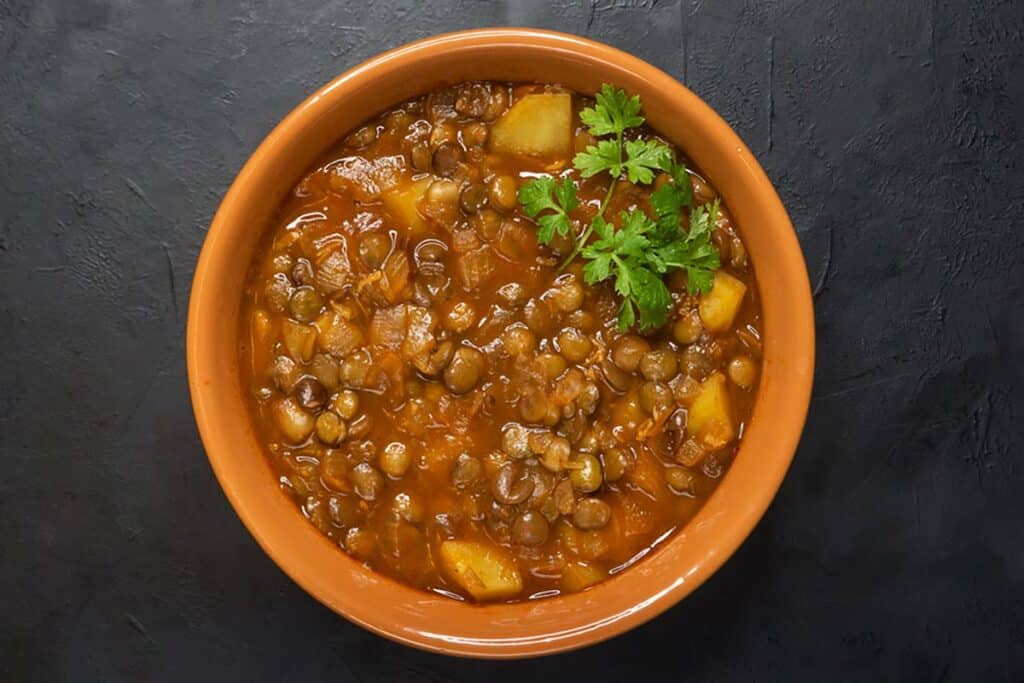
This vegetarian stew is gently simmered until ready to eat. Its ingredients typically include chickpeas, lentils, carrots, tomatoes, onions, and celery, all seasoned with quintessentially Moroccan flavors such as cumin, cinnamon, and coriander.
Coconut milk is sometimes added — it blends perfectly with the traditional Moroccan spices. Chunks of beef can also be added for those who prefer meat.
Moroccan fish
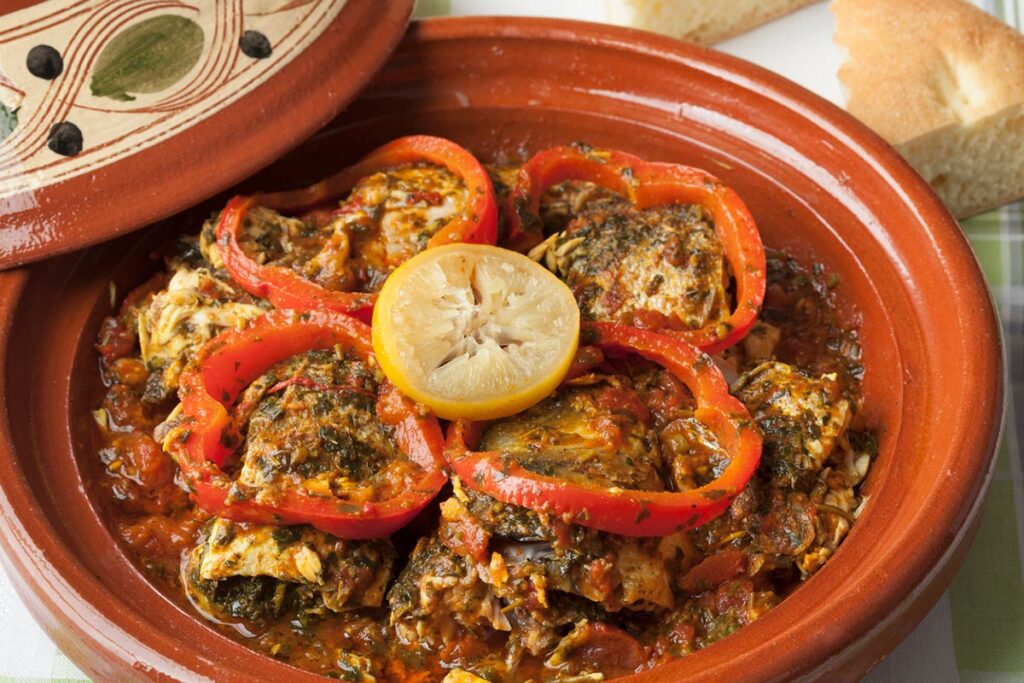
A staple in Moroccan households, these fish fillets are cooked in a spicy sauce with flavors of paprika, cumin, turmeric and tomato paste, alongside mixed vegetables such as carrots, tomatoes, bell peppers, and sliced potatoes.
There are many iterations of this traditional dish, with preferences varying from family to family — some favor salmon, while others opt for cod or flounder. Today, it continues to hold its place of honor at many Shabbat tables in both Israel and North Africa.
South Africa:
Kichel:
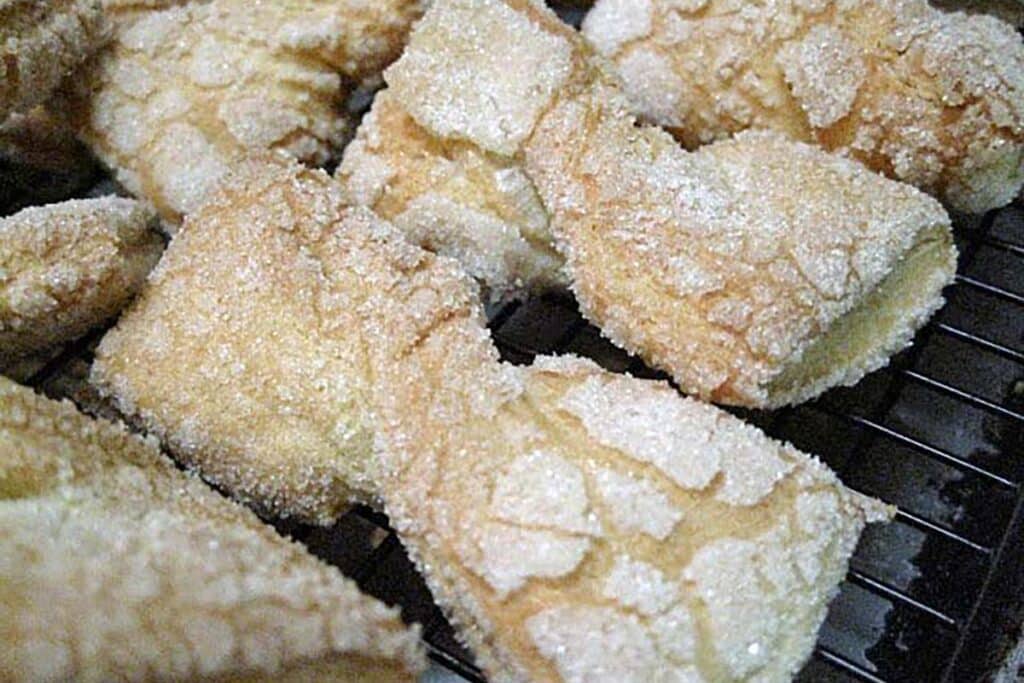
Also known as ‘Jewish bow-tie cookies’ due to their unique shape, these light and crisp cookies actually resemble a cracker more than a cookie. Often dusted with sugar or cinnamon, they can be a sweet treat or enjoyed with a savory dip or stew. Although the dough was initially shaped into squares, modern iterations often take on a bow-tie form. Kichel is often served at synagogue kiddushes.
Spain:
Cocido
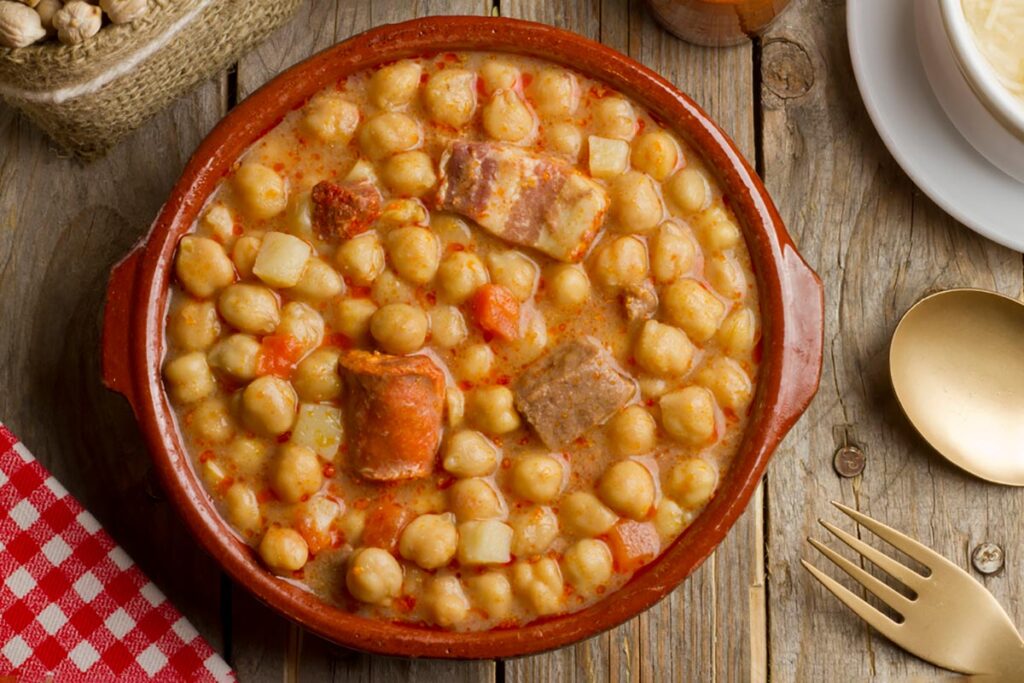
This flavor-rich Spanish chickpea stew boasts a rich history dating back to the 1400s. With a recipe that adjusts to regional ingredients, Cocido, also known as Adafina, can be made with or without meat. It has been a cherished staple of Shabbat in Spanish Jewish households for centuries.
Traditionally, it might include lamb or goat, along with an assortment of vegetables — particularly root vegetables — and, of course, chickpeas.
Syria:
Kibbeh
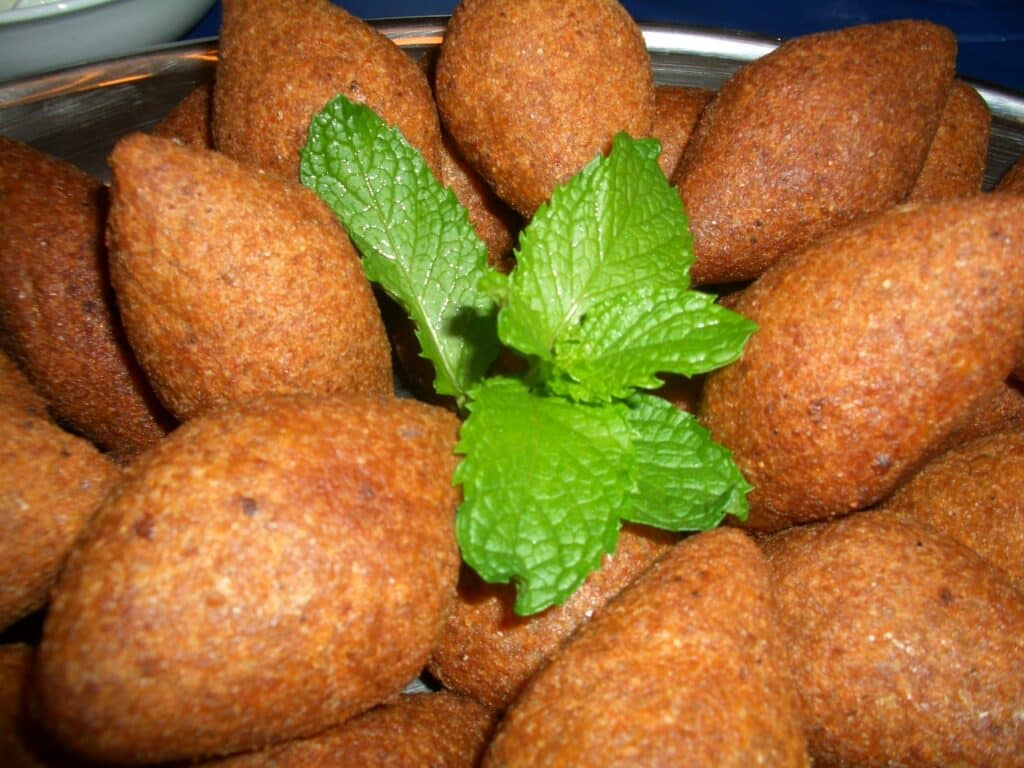
Often gracing the first course of a Syrian Shabbat meal, alongside small pastries and salads, is kibbeh. This dish is defined by its exterior — a bulgur wheat shell, shaped into palm-sized ovals. The shell is then generously stuffed with minced meat and spices, before being deep-fried to perfection.
Served with tahini and sliced lemon, kibbeh is a culinary emblem of both Syria and Lebanon. In particular, the city of Aleppo is renowned for boasting an impressive repertoire of 17 distinct types of Kibbeh.
Yemen:
Nayim
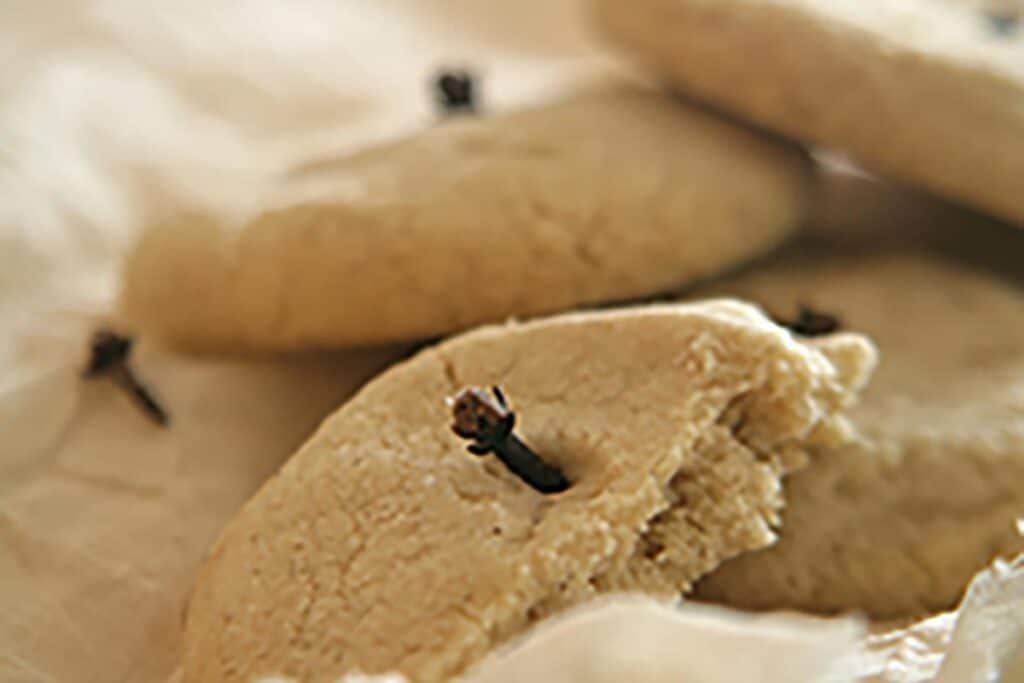
These buttery, rich cookies, infused with cardamom, are a cherished treat from Yemen, particularly in the coastal community of Aden. Having been under British rule, this community’s cuisine is often a fusion of Eastern and Western influences.
These cookies or “biscuits” are slightly sweet and very rich, making them a beloved treat among Yemeni families, especially children.
Abraham’s soup
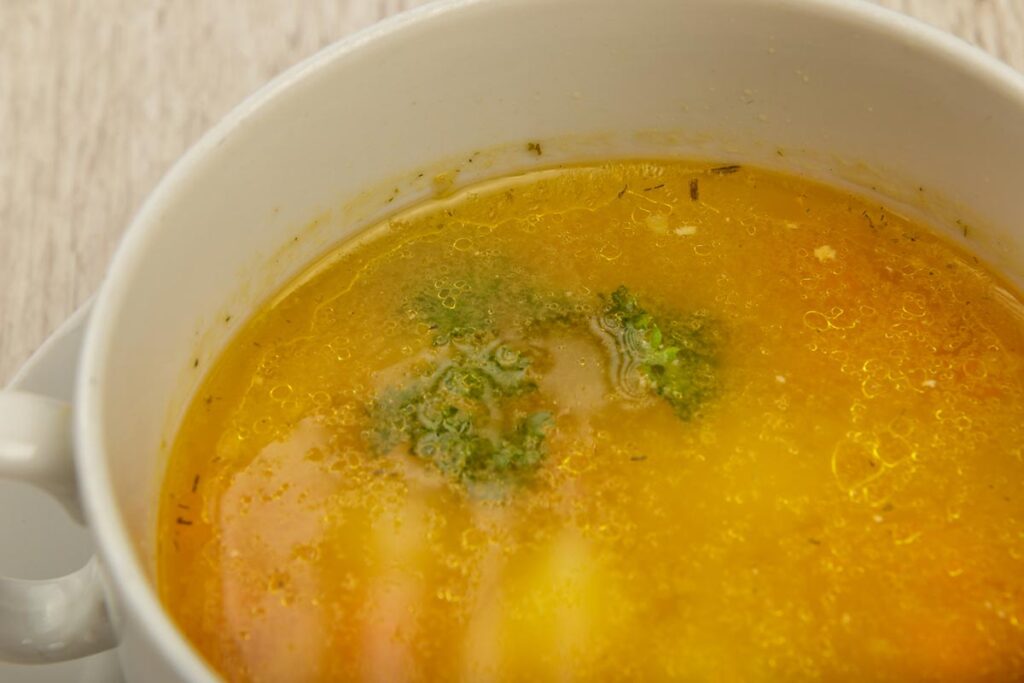
A staple of many Yemeni Shabbat tables, Abraham’s Soup is a versatile bone-based broth that can be adapted to incorporate seasonal ingredients.
For example, in the winter, the soup might include hearty squash, root vegetables, and cauliflower. In the spring, it could feature young garlic heads, tomatoes and fresh herbs.
Tunisia:
Pkaila
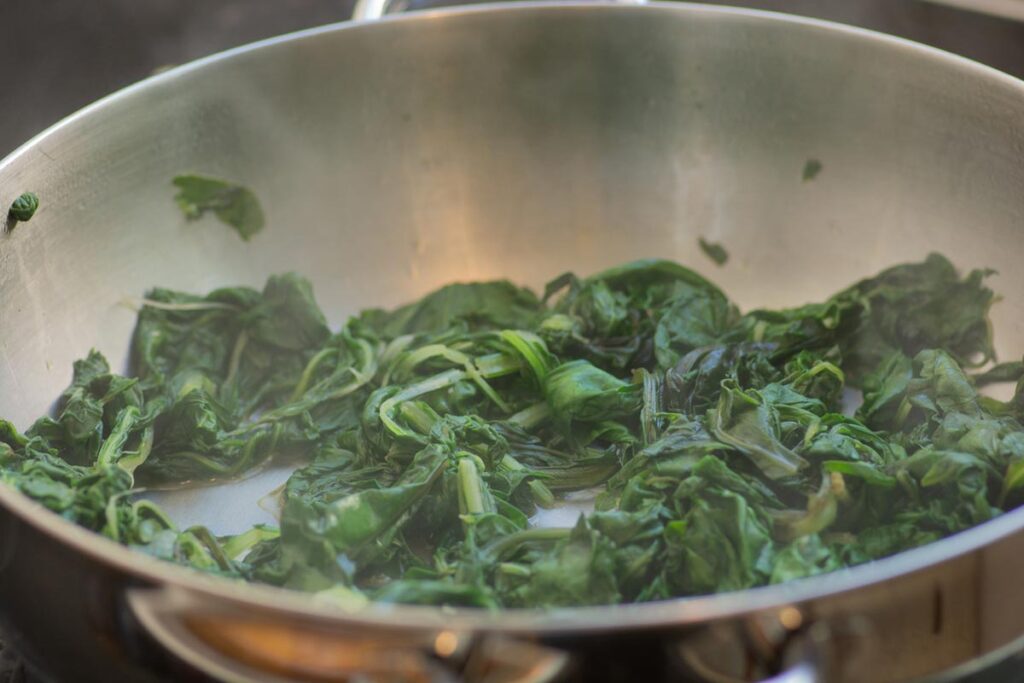
Pkaila — sometimes known as bkaila — is a beloved dish among Tunisian Jews, taking its name from the Tunisian word for spinach. This long-simmering dish involves fried spinach combined with white beans or chickpeas, meat, mint, and garlic.
The extended cooking time allows the flavors to meld and develop, resulting in a savory depth that is characteristic of Tunisian cuisine. While Pkaila is a Shabbat staple, it is also served at Rosh Hashanah meals, adding a touch of tradition to the holiday festivities.
Jachnun/Shabbat rolls
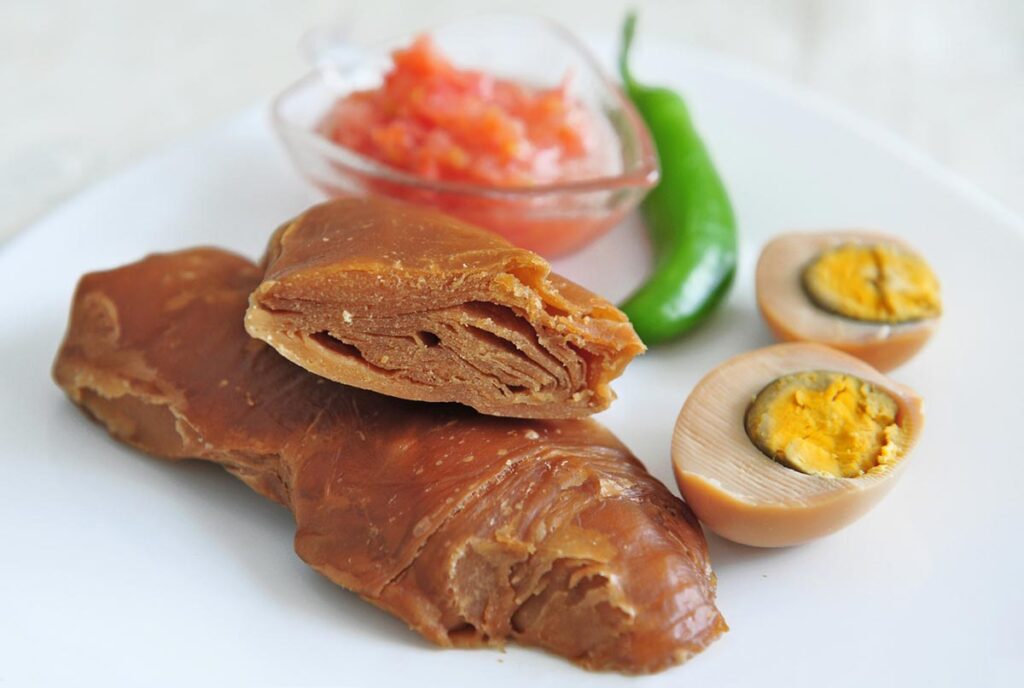
Originating from Yemen, jachnun is a warm, intricately-prepared rolled pastry that’s baked for up to 16 hours and generously brushed with clarified butter. These meticulously-stretched dough rolls are a delicious breakfast pastry option, though they are traditionally enjoyed after Shabbat prayers.
Jachnun is so popular that it is a Shabbat mainstay even for those who don’t partake in religious observances. It can be eaten plain, dipped in honey, smeared with jam, or by lasis — an egg and tomato dip.
Originally Published Aug 4, 2023 10:00AM EDT
